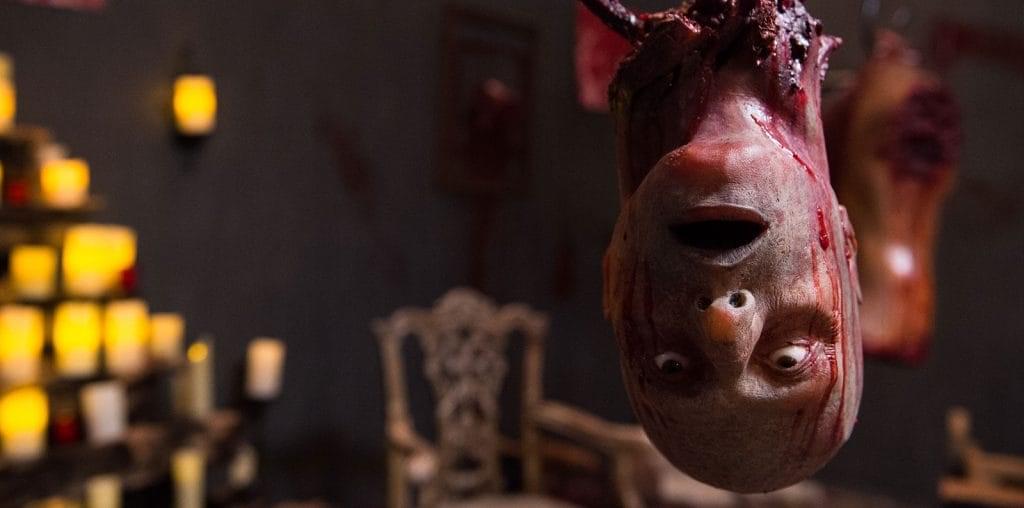
Should Mel Gibson have any funny ideas about basing his next ecumenical extravaganza on the book of Job, he would be wise to forget them. Such a project would almost surely wind up looking like a lighthearted romp next to director Kevin MacDonald’s harrowing tale of adversity transcended, Touching the Void.
MacDonald earned an Academy Award for the 2000 documentary One Day in September, his account of the tragic events which took place at the 1972 Olympiad. His latest-part documentary, part reinactment-tells the astounding story of two twentysomething British climbers and the ordeal they underwent almost twenty years ago in the Peruvian Andes.
In 1985 Joe Simpson and Simon Yates joined forces to scale the west face of a mountain named Siula Grande, the only face in the range yet to be successfully climbed. Young, fit and with lots of experience in the Alps, the two decided to employ the Alpine or “one push” approach. Supplies are limited to minimize weight. Everything needed is carried rather than cached along the route in base camps. The idea is to get up and back down in a single brazen spurt. According to Simpson, the pair looked forward to “a challenging day out.”
Seven days in hell is what they got. MacDonald chronicles their adventure using an Errol Morris meets Imax combination of on-the-scene footage, event recreation and interviews. It’s a testament to the power of the story that knowing both men survived to tell it on screen doesn’t make it the slightest bit less amazing.
Simpson and Yates did, in fact, get to the summit with relatively little trouble. That’s when their problems began. “Eighty percent of all accidents happen on descent,” we’re informed by Simpson and he should know. Everything that could possibly go wrong proceeded to go wrong for him. The only thing between the two climbers and a 20,000 foot plummet was a 300 foot length of rope. When Simpson became disoriented in a storm and suddenly went into freefall down the mountain, Yates was anchored in place and able to hold him. Simpson’s leg was shattered in the accident, however, his calf bone rammed up through the joint of his knee.
Normally, on a two man climb, this would have been a death sentence. A storm had engulfed them. They had run out of fuel, food and water. Both men were slowly freezing to death. Simpson was in agonizing pain and could no longer walk. To his surprise, though, Yates didn’t “go for help,” a euphemism for leaving a crippled climber to die in order to save one’s self. Rather, he devised a method of lowering his friend 300 feet at a time. Repeating the maneuver over and over, the young men began to believe they’d seen the worst of it and might just make it to the bottom together at which point, help would be a hobble of a mere few miles away.
That’s when Simpson realized Yates had lowered him over a precipice. For more than an hour, he dangled in space, a blizzard making it impossible for the friends to hear one another’s shouts. Since it was night, Simpson had no idea what lay below him or how far below it lay. Three hundred feet away, Yates had no idea why his partner wasn’t tugging on the rope, the signal that he’d anchored himself and it was safe for Yates to descend to his position. Realizing that his strength was draining away, his body temperature was falling and that he was gradually slipping down the mountain and would die if he didn’t take action, Yates did the unthinkable for a climber: He cut the rope.
I want so badly to tell you what happened after that. It’s the sort of man versus the elements saga you can’t look away from while it’s unfolding, can’t believe could actually have taken place and then can’t wait to blab in minute detail to anybody who will listen. But that would be wrong. Life is less than generous when it comes to doling out opportunities for true astonishment and this is one. You deserve to be as blown away as I was.
Suffice it to say that MacDonald has made the finest mountain climbing movie you are likely ever to come across. The cinematography is awesome, the score by Alex Heffes terrific, the reenactments remarkably credible and the effect of looking into the haunted eyes of these now fortysomething men unforgettable. Plainly, at one point or another, forty was something neither believed he’d live to see.
It’s a shame the title Miracle was taken. Here’s a film befitting it.

